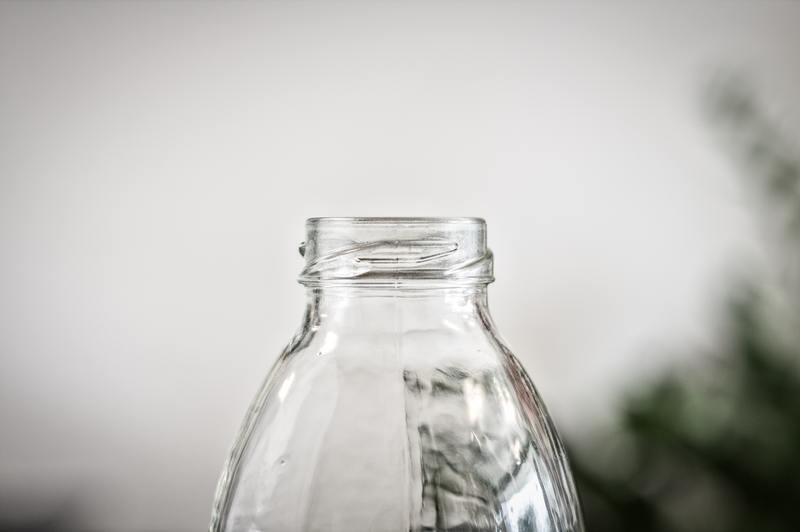Did you notice black spots in your water bottle and plastic containers? Chances are it is mold, so here’s how to remove mold from plastic in a few simple steps!
With enough moisture, anywhere and anything in our home can be conducive for mold growth. This includes the plastic materials where we put our food and other pieces of stuff.

What You Need to Prepare
In this DIY project, you will need to prepare a few materials. Don’t worry because these are very accessible and are usually found in the comfort of your home.
- Detergent or non-ammonia soap
- Bleach
- Water
- Sponge or soft cloth
- A pair of rubber gloves
- Mask
6 Steps To Getting Rid Of Mold In Plastic
Scrubbing away mold from your plastic bottles and containers is not as difficult as it sounds. You just need to use a few chemicals and do a few easy steps.
Step #1. Wear protective equipment
Since you will be working with bleach, you must wear something to protect your nose and skin. Use a mask and rubber gloves so you can avoid inhaling the fume and skin contact.
Step #2. Wash away the visible mold
With a detergent or dish soap that is ammonia-free, wash away all the mold you can see. It is essential that you check for ammonia content because you will be using bleach later on. Bleach and ammonia when mixed will create toxic fumes which are harmful when inhaled.
Step #3. Create a bleach solution
For the cleaning solution, mix ½ cup of bleach and a gallon of water. For severe cases of mold, mix a stronger solution by adding another ½ cup of bleach.
Step #4. Soak the plastic container in the solution
Pour the solution in a pail or basin and soak in the plastic container or bottle. Make sure that all the moldy parts are fully submerged. Allow it to sit for no less than 15 minutes.
Step #5. Scrub off the remaining mold and rinse
After soaking, scrub the remaining mold from the plastic container using a sponge or soft cloth and ammonia-free detergent or dish soap. Then, thoroughly rinse the container to wash away the bleach and soap.
Step #6. Dry the plastic container
One washed, put the container in a draining pan upside down, to let the water drip down. Wait for it to dry completely before using.
Well done! You have learned how to do a DIY mold removal in plastic. If you frequently place your plastic materials in the fridge, it would also be best for you to check out this guide on cleaning mold from the fridge.
More ideas and tips
Here are additional ideas and tips when dealing with mold in plastic. You can also check out this article to read about the best cleaning agents to remove mold in plastic bottles.
1. The sun can be used as natural mold remover
After treating the mold in the plastic container, you can let it sit under the sun for several hours. The heat will remove any remaining mold traces.
2. You can remove mold using razor
If you see the mold settling on the surface of the plastic, you can use a razor to scrape it off. Just be careful not to cut your finger and the plastic.
3. Ventilate the area when using bleach
Bleach can cause skin and eye irritation. Make sure to work in a well-ventilated area and wear necessary protective gears.
4. Never use a dishwasher to kill mold
The temperature in the dishwasher is not enough to kill the mold in your plastic containers and bottles. Other than killing it, it is more likely that the dishwasher will spread the mold on other dishes inside the machine.
5. Frequent disinfection helps
Disinfecting your plastic pieces regularly will help prevent mold build-up. Drying them out quickly will also make them less conducive for mold growth.
6. Use non-toxic materials to kill mold
Aside from bleach, you can also use other materials found at home to get rid of mold. Vinegar and baking soda are also helpful in killing and removing mold. They are safer to use and will not put your health at risk.
Prolonging the life of plastic ware
To extend the life of your plastic ware, make sure to clean them frequently and thoroughly. You can use different solutions and materials to do it.
Salt and lemon are effective in cleaning plastic pieces. You can also use alcohol, sanitizer, and denture tablets. When using bleach, make sure that you dilute it so it will not be too harsh to damage your plastic ware.
Since most plastic cannot stand too much heat, make sure to keep them away from direct sunlight and other sources of heat. High temperatures can deform plastic while direct sunlight will make it brittle.
Conclusion
Plastic ware are known to be durable and lightweight, making them popular for household use. However, it can still be damaged easily when not properly taken care of. Since they are usually exposed to excessive moisture, they can be prone to mold growth.
What’s your favorite tip on how to remove mold from plastic? It is certain that you wouldn’t want to go through any of those hassles, but knowing them will surely come in handy at least once in your life.
